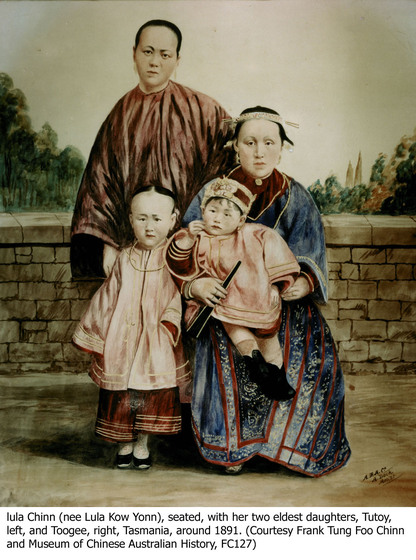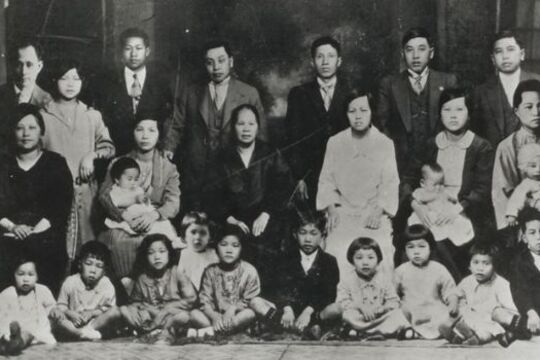Chinese Australian Families
Dreams of Jade and Gold: Chinese families in Australia's history
From the 1840s onwards, Chinese people have come to Australia inspired by dreams of happiness, longevity and prosperity - of 'jade and gold' in a new and strange land. For most of that time, Chinese people in Australia have been predominantly male. Most of them were temporary sojourners who came to earn money for their families back in the village - most did not intend to settle in Australia.
Despite the predominance of male sojourning, a small proportion of Chinese men in nineteenth-century Australia brought their wives and children to live with them, or married here. As Australian-born children of these families grew to adulthood, their parents would seek brides and grooms on their behalf amongst other Chinese families in Australia.
The majority of post-1905 Chinese brides of Chinese-Australian sons were never able to settle here. Some children were born in China or Hong Kong. Some were born in Australia. Families like this were split for decades, until immigration laws were relaxed.
In the nineteenth century, many of the Chinese men who wanted wives in Australia married or lived de facto with non-Chinese women. At least 500 European-Chinese partnerships are estimated to have occurred before 1900.
Despite repeated waves of racism and official discrimination from the 1840s to the 1970s, a sizeable number of families of Chinese background have put down roots in this country.
In 1973 the Whitlam government abolished racist provisions in immigration laws. Since then, the number of ethnic Chinese migrants has increased dramatically. They have come primarily as family groups - not as sojourners, but as permanent immigrants. They come not only from China and Hong Kong, but also from Malaysia, Singapore, Vietnam, Cambodia and Indonesia, as well as from further afield. The Chinese are now a highly visible and generally accepted part of the Australian community of cultures.
The text above has been abstracted from an essay 'Dreams of Jade and Gold: Chinese families in Australia's history' written by Paul Macgregor for the publication The Australian Family: Images and Essays. The full text of the essay is available as part of this story.
This story is part of The Australian Family project, which involved 20 Victorian museums and galleries. The full series of essays and images are available in The Australian Family: Images and Essays published by Scribe Publications, Melbourne 1998, edited by Anna Epstein. The book comprises specially commissioned and carefully researched essays with accompanying artworks and illustrations from each participating institution.









